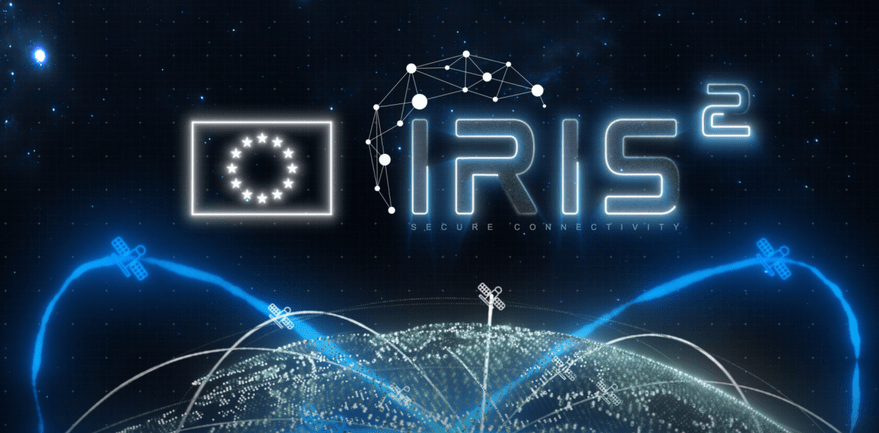
Italy is at a critical juncture in its space strategy, as a report from the country’s Interministerial Committee for Space and Aerospace Policy (COMINT) raises questions about the nation’s role in the IRIS2 program. This European Union initiative aims to establish a public-private communication constellation in low and medium Earth orbit. Simultaneously, the report acknowledges that SpaceX has offered to provide its Starlink services to Italy, intensifying discussions about the country’s future in satellite communications.
As Italy considers its options, it must decide whether to proceed with the development of a national low-Earth orbit telecommunications constellation, tentatively named MERCURIO, or to deepen its reliance on Starlink while awaiting the full operational capability of IRIS2. The COMINT report, which SpaceNews obtained, does not indicate a definitive shift towards Starlink. The Italian newspaper Il Fatto Quotidiano first reported on the findings, highlighting the ongoing deliberations within the Italian government.
Italy’s position concerning Starlink has evolved significantly. In January 2025, Bloomberg reported that the Italian government was negotiating with SpaceX to acquire Starlink services for up to $1.6 billion over an unspecified duration. While officials from Palazzo Chigi denied that any contracts were finalized, they confirmed that discussions with SpaceX were active.
Italy Weighs Options Amid Satellite Developments
In March, COMINT and the Italian Space Agency (ASI) initiated a feasibility study for MERCURIO, which has advanced from Phase 1 to Phase 2. Details regarding the number of satellites and budget remain undisclosed, and no public report on Phase 1 has been released. Nevertheless, the leaked document acknowledges SpaceX’s offer of Starlink services, emphasizing its “clear superiority” over IRIS2, which is not yet operational and is described as less ambitious.
The report also highlights that Italian industry appears to be “underrepresented” in IRIS2, stressing the need for a more balanced approach between national ambitions and European industrial participation. Key contractors in the IRIS2 consortium include companies from Luxembourg, France, Germany, and Spain, with two partially Italian-owned firms, Telespazio and Thales Alenia Space, involved in the project. Both companies declined to comment on the current situation.
In a recent LinkedIn post, Thales Alenia Space reaffirmed its commitment to IRIS2, stating, “IRIS2 will be the ultimate in the field of telecommunications constellations.” The company emphasized its intent to leverage its legacy and offer advanced technologies to support this strategic European initiative.
According to a source close to COMINT, who spoke on the condition of anonymity, the report’s observations regarding SpaceX’s operational maturity compared to IRIS2 do not reflect a political preference or procurement decision. The source clarified, “The government’s line is clear: pro-European and transatlantic. We strongly support EU programs such as GOVSATCOM and IRIS2 for secure connectivity, to which Italy makes a qualified contribution in industrial, operational, and security terms.”
The source reiterated that any interim solutions, pending the full operational capacity of the European IRIS2 constellation, would be assessed on a case-by-case basis. Therefore, Italy does not view Starlink as a permanent alternative to IRIS2 but rather as a temporary solution until the European system is fully operational.
Strategic Implications for Italian Space Policy
As studies on MERCURIO progress, a decision on whether to pursue a national satellite constellation or rely on Starlink is expected later this year. The leaked report concludes with a broader observation about the strategic balance between Europe and the United States, noting that the EU will inevitably depend on a close relationship with the U.S. in key sectors like satellite telecommunications.
This situation underscores a tension within Italian space policy: the challenge of balancing the pursuit of sovereignty, resilience, and innovation against the realities of reliance on U.S. technology and partnerships. Some analysts caution against jumping to conclusions. Ludwig Möller, director of the European Space Policy Institute (ESPI), remarked, “Today, de facto, there is nothing comparable to Starlink.” He noted that countries in urgent situations will gravitate towards available solutions, stating, “That is completely normal.”
Möller added that while “Starlink is the shining star today,” the landscape may change in the near future. He compared the current state of satellite communications to the early days of the internet, suggesting that Europe still has the opportunity to develop its capabilities.
As the timeline for Italy’s decision approaches, the balance between national aspirations and collaborative European efforts remains a focal point in the evolving space landscape.







